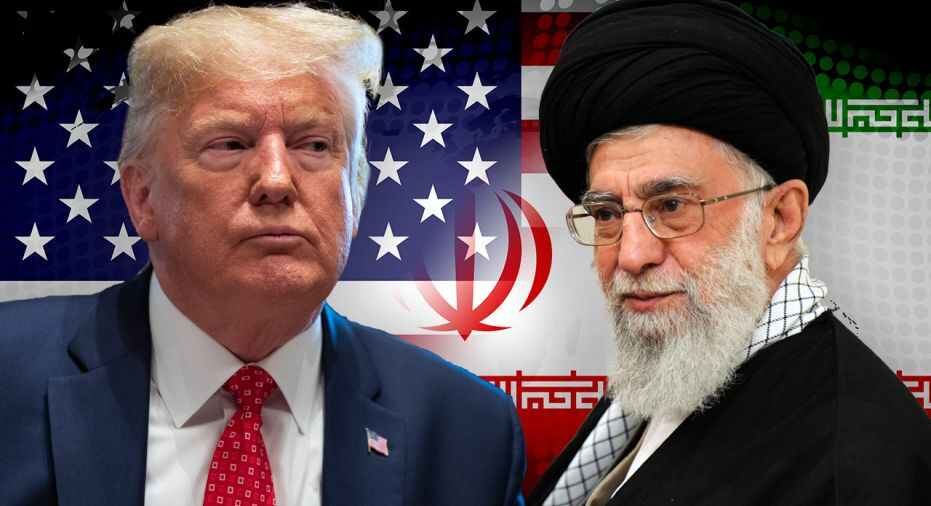President Trump on Wednesday said he instructed the U.S. Navy to fire at any Iranian gunboats that “harass” American ships at sea.
“I have instructed the United States Navy to shoot down and destroy any and all Iranian gunboats if they harass our ships at sea,” Trump said in a tweet.
Trump’s statement comes a week after 11 Iranian Islamic Revolutionary Guard Navy vessels operated dangerously close to U.S. ships in the Gulf. A U.S. Navy release video of the incident last week shows small Iranian fast boats coming close to American warships as they operated in the northern Persian Gulf near Kuwait, with U.S. Army Apache helicopters. On Sunday, the Guard acknowledged it had a tense encounter with U.S. warships in the Persian Gulf, but alleged without offering evidence that American forces sparked the incident.
Meanwhile, Iran’s Revolutionary Guard said it put the Islamic Republic’s first military satellite into orbit, dramatically unveiling what experts described as a secret space program with a surprise launch Wednesday that came amid wider tensions with the United States.
There was no immediate independent confirmation of the launch of the satellite, which the Guard called “Noor,” or light. The U.S. State Department and Israeli officials did not immediately respond to requests for comment while the Pentagon said it “will continue to closely monitor Iran’s pursuit of viable space launch technology.”
However, such a launch immediately raised concerns among experts on whether the technology used could help Iran develop intercontinental ballistic missiles.
Already, Iran has abandoned all the limitation of its tattered nuclear deal with world powers that President Donald Trump unilaterally withdrew America from in 2018. Trump’s decision set off a monthslong series of escalating attacks that culminated in a U.S. drone strike in January that killed a top Iranian general in Iraq, followed by Tehran launching ballistic missiles at American soldiers in Iraq.
As the world grapples with the coronavirus pandemic and historically low oil prices, the missile launch may signal a new willingness to take risks by Iran.
“This raises a lot of red flags,” said Fabian Hinz, a researcher at the James Martin Center for Nonproliferation Studies at the Middlebury Institute of International Studies in Monterey, California. “Now that you have the maximum pressure campaign, Iran doesn’t have that much to lose anymore.”
On its official website, the Guard said the satellite successfully reached an orbit of 425 kilometers (264 miles) above the Earth’s surface. The Guard called it the first military satellite ever launched by Tehran.
The three-stage satellite launch took off from Iran’s Central Desert, the Guard said, without elaborating.
Hinz said based on state media images, the launch appeared to have happened at a previously unnamed Guard base near Shahroud, Iran, some 330 kilometers (205 miles) northeast of Tehran. The base is in Semnan province, which hosts the Imam Khomeini Spaceport from which Iran’s civilian space program operates.
The paramilitary force said it used a Ghased, or “Messenger,” satellite carrier to put the device into space, a previously unheard-of system. It described the system as using both liquid and solid fuel.
“Today, the world’s powerful armies do not have a comprehensive defense plan without being in space, and achieving this superior technology that takes us into space and expands the realm of our abilities is a strategic achievement,” said Gen. Hossein Salami, the head of the Guard. He described the satellite as “multifunctional.”
Wednesday marks the 41st anniversary of the founding of the Guard by Iran’s late leader, Ayatollah Ruhollah Khomeini. An image of the rocket that carried the satellite showed it bore a Quranic verse typically recited when going on a journey, as well as a drawing of the Earth with the word Allah in Farsi wrapped around it.
The Guard, which operates its own military infrastructure in parallel to Iran’s regular armed forces, is a hard-line force answerable only to Supreme Leader Ayatollah Ali Khamenei. It wasn’t immediately clear if Iran’s civilian government knew the launch was coming. President Hassan Rouhani gave nearly a 40-minute speech Wednesday before his Cabinet that included no mention of the launch.
Responding to a query from The Associated Press, Iranian Information and Communications Technology Minister Mohammad Javad Azari Jahromi wrote on Twitter that the Guard’s space program was “defensive” in nature, while the overall program was “peaceful,” without elaborating.
U.S. Army Maj. Rob Lodewick, a Pentagon spokesman, told the AP that American officials continue to monitor Iran’s program.
“While Tehran does not currently have intercontinental ballistic missiles (ICBMs), its desire to have a strategic counter to the United States could drive it to develop an ICBM,” Lodewick said.
Iran has suffered several failed satellite launches in recent months. The latest came in February, when Iran failed to put its Zafar 1 communications satellite into orbit.
That failure came after two failed launches of the Payam and Doosti satellites last year, as well as a launchpad rocket explosion in August. A separate fire at the Imam Khomeini Space Center in February 2019 also killed three researchers, authorities said at the time.
The rocket explosion in August drew even the attention of Trump, who later tweeted what appeared to be a classified surveillance image of the launch failure. The successive failures raised suspicion of outside interference in Iran’s program, something Trump himself hinted at by tweeting at the time that the U.S. “was not involved in the catastrophic accident.”
The U.S. alleges such satellite launches defy a U.N. Security Council resolution calling on Iran to undertake no activity related to ballistic missiles capable of delivering nuclear weapons.
Iran, which long has said it does not seek nuclear weapons, previously maintained its satellite launches and rocket tests do not have a military component. The Guard launching its own satellite now calls that into question.
Tehran also says it hasn’t violated a U.N. resolution on its ballistic missile program as it only “called upon” Iran not to conduct such tests.
Wednesday’s launch, however, raised new questions. While Iran isn’t known to have the know-how to miniaturize a nuclear weapon for a ballistic missile, any advances toward an intercontinental ballistic missile would put Europe and potentially the U.S. in range.
Over the past decade, Iran has sent several short-lived satellites into orbit and in 2013 launched a monkey into space.
Even as both face the same invisible enemy in the coronavirus pandemic, Iran and the United States remain locked in retaliatory pressure campaigns that now view the outbreak as just the latest battleground.
Initially overwhelmed, Tehran now seeks to sway international opinion on U.S. sanctions by highlighting its struggles with COVID-19, the illness caused by the virus. In Iran, the regional epicenter of the outbreak, the virus has killed more than 5,290 people, from among over 84,800 reported cases.
Image Source:*foxbusiness.com
Source:foxbusiness.com









